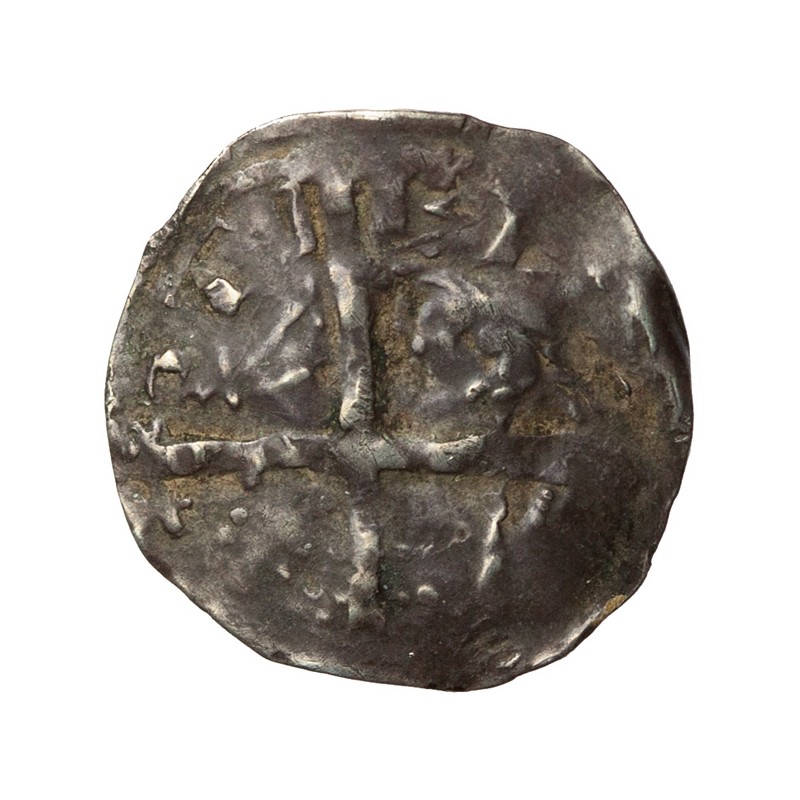





Stephen Silver Penny
Erased Dies
Edstan on Norwich
1.13g 19.2mm
Spink - 1283
North - 924 Very Rare
Obverse:
STIEF[NE]. Crowned bust r. holding sceptre in right hand. Die defaced with long cross.
Reverse:
[EDST]AN ON NOR. Cross moline with fleur in each angle.
Slightly crimped otherwise very fine and richly toned. Very rare and seldom seen for sale.
"There is a series of coins of the first type of King Stephen struck from erased obverse dies. The erasure generally takes the form of either a series of criss-cross cuts across the King's face, a long cross extending to the edge of the coin, a small cross placed variously on the King's face or shoulder or even the shaft of the sceptre, or a bar across the shaft of the sceptre, and on one coin of York, which may be a contemporary forgery, two parallel lines from edge to edge. Sometimes a pellet or small cross is added. The erasure is either stamped or cut in the die. That this was done after coins had been struck from the dies in the ordinary manner is proved by coins of the Stamford mint which are known struck from the same obverse die both before and after the erasure was made.
These coins vary considerably both in weight and fineness. The majority are of low weight, anything from 14 to 17 grains, and many have the appearance of being of base silver, but on the other hand some are obviously of good silver and weigh up to 21 grains or more. The reason for this erasure is not quite clear but the generally accepted explanation is that the dies were either erased by a moneyer loyal to the king when the mint he was working at was in danger of falling into the hands of the Angevin party, or else the die was so treated after capture by the king's enemies, who would no doubt wish to use the king's dies without acknowledging his title. In the first instance, should the mint not fall into the hands of the enemy, the moneyer had no alternative but to go on striking coins from the die he had erased, unless he was prepared to cut another one himself, but it is unlikely that he would have much difficulty in passing defaced coins into circulation. If, on the other hand, the mint was captured, there is no reason to suppose that the Angevin party would not strike coins from dies so erased. It is likely that the coins of base metal and light weight were the product of dies in Angevin hands. Most of the wrealth of the country was held by the Royalists and the majority of Angevin coins are debased.
It has been suggested that the armorial badge of certain barons may be seen in the erasing cross and that the large cross extending to the edge of the coin on the Norwich and Thetford coins may signify they were issued under the authority of Hugh Bigod, earl of Norfolk, and the smaller cross on the Nottingham coins signify they were issued under the authority of William Peverel, earl of Nottingham. But it is doubtful whether any baron would risk such an open procedure, even if armorial badges were in common use at this early date, and it is more likely that the crosses were only used as a convenient method of defacing the die."
R. P. Mack, (1966) ‘Stephen and the Anarchy 1135-1154’ British Numismatic Journal, vol. 35 1966, Page 59.
Data sheet
Specific References